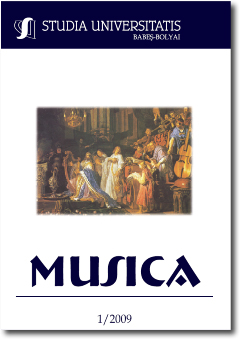THE BYZANTINE CHANT IN THE ROMANIAN PRINCIPALITIES DURING THE PHANARIOT PERIOD (1711 – 1821)
THE BYZANTINE CHANT IN THE ROMANIAN PRINCIPALITIES DURING THE PHANARIOT PERIOD (1711 – 1821)
Author(s): Nicolae GheorghiţăSubject(s): Music
Published by: Studia Universitatis Babes-Bolyai
Keywords: Byzantine music; Phanariot music; ecclesiastical chant; secular music; Mount Athos; cult languages in Danubian Principalities;
Summary/Abstract: Following the attempt of the Moldavian Prince, Dimitrie Cantemir to get rid of the Turkish reign through the alliance with Peter the Great and his defeat in 1711, the Turks decided not to grant the reign of Moldavia and Wallachia to a Romanian Prince, but to a Greek one who came from Phanar – the famous neighbourhood in Constantinople – whom they would permanently be able to supervise. The chosen one was Nicholas Mavrocordato, son of the Great Dragoman of the Sublime Porte Alexander Mavrocordato, and together with his election, the Phanariot reigns began in two of the three Romanian provinces: Moldavia and Wallachia or Ouggro – Wallachia as they used to call it. The third, Transylvania, was part of the Austrian-Hungarian Empire until 1918. For more than a century, to be more precise, from 1711 in Moldavia and from 1714 in Wallachia until the year of the Balkan revolution, in 1821, the Princes of the two Romanian provinces were assigned directly by the Turks on Bosporus shores. Thus, during 1711 – 1821, thirty-one Phanariot Princes, part of eleven families, were to be on the two countries thrones on seventy-five occasions. 2. The present study aims at the analysis of the musical-ecclesiastical phenomenon in the two Romanian provinces, Wallachia and Moldavia, during 1711 – 1821, in order to emphasize the following elements: I. The Cult Languages in allachia and Moldavia II. The Byzantine Musical Education in the Romanian Principalities III. The Idea of Canonicity in the Romanian Music of Byzantine Tradition.
Journal: Studia Universitatis Babes-Bolyai - Musica
- Issue Year: 54/2009
- Issue No: 1
- Page Range: 39-82
- Page Count: 44
- Language: English

